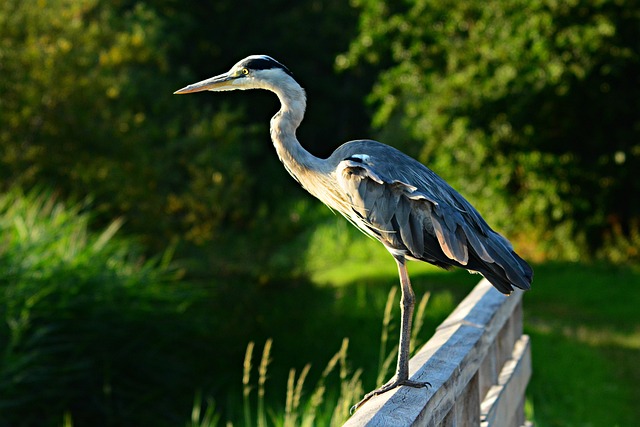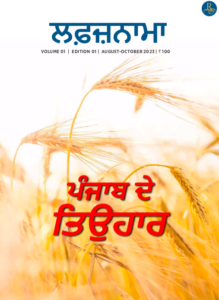Haiku Blossoms (13)

Haiku & Zen
Dear Readers, haiku is a path, a way of life and we are traversing this journey together on Rhyvers. We have covered what haiku is, what are the techniques of writing haiku, learnings from Pravat Kumar Padhy, Jim Kacian, Kala Ramesh, Alan Summers, James W. Hackett, my haiku journey, seasons in haiku, monoku, experiences of an indian poet Prof Ram Krishan Singh, and we have also studied some works of the great haiku masters—Basho, Issa & Buson.
I have always been fascinated by the influence of Zen in haiku. Daisetz T. Suzuki says, “The aim of Zen is to open the eye of the “supreme reason” (iiryajnana), that is, to awaken the inmost sense which has remained altogether dormant since the beginning of the human consciousness. When this is accomplished. one sees directly into the truth of Reality and confronts a world which is new and yet not at all new.” In haiku, we do the same…
While researching more on this subject I came upon an article by Richard von Sturmer on the New Zealand Poetry Society which I found very interesting. I wrote to Richard and expressed my request to share his work on Haiku Blossoms. Despite the post-cyclone turmoil in New Zealand, he generously sent me his complete article which I share below with his kind permission.
Haiku and Zen
A presentation for the Haiku Festival Aotearoa 2005
There is a Zen wave and there is a haiku wave. Viewed a certain way, they are quite separate. Yet they also overlap. Both enquire into the nature of things, into the True Nature of things — the way things are. While remaining distinct — one a spiritual discipline, the other a literary practice — they share a number of qualities. In this presentation, instead of discussing the historic relationship between Zen and haiku, I’d like to explore these qualities from the perspective of both a long-time Zen practitioner and a haiku poet.
Having said that, it is generally acknowledged in contemporary haiku circles that the “Zen connection” has been over-emphasized in the West, especially through the influence of the great early translator of haiku, R.H. Blyth. Of all the prominent Japanese poets, only Bashō practised zazen, Zen meditation, under a Zen master, Butchō. And he did this infrequently, admitting in a letter that his first calling was haiku. Near his death, according to one of his disciples, he could only think of writing, not of spiritual practice, and he called his obsession with poetry “a sinful attachment”.
Zen is the school of Buddhism that puts the emphasis on meditation. Haiku, the poetry of nature and human nature, has no religious affiliations. You don’t have to know anything about Zen to practise haiku and, conversely, you should not fool yourself that you’re engaging in Zen practice when you’re writing haiku. But since the Middle Ages, through the tea ceremony, flower arrangement, the martial arts, and Noh drama, the influence of Zen, with its simplicity and austerity, has been the predominant force in Japanese culture. The qualities inherent in Zen can bring out the best in our own haiku writing. Both Zen and haiku spring from Mind — Mind with a capital M. This is Mind that goes far beyond our rational, intellectual consciousness; it is the Mind of the mountains and rivers, of the earth and the stars and the whole universe.
We’ll now look at nine qualities of Zen that relate directly to haiku practice. Through this exploration I hope that our appreciation of haiku – and the art of writing haiku – will deepen. The starting point for each one is a Zen capping phrase (in italics). In Japan, Rinzai Zen students carry around a book of thousands of these phrases which they consult while working their way through the kōan curriculum.
- Oneness
Zen Buddhism teaches that our suffering arises from our sense of separation, from feeling “alone and afraid in a world I never made.” The practice of haiku is a way of dissolving this feeling of separation by experiencing the unity of our own nature and the nature of everything around us. Through writing haiku, we affirm the fundamental interconnectedness of all things.
The oneness of colours when the green snake climbs the bamboo.
The infinite feeling when a yellow butterfly flies over the hedge.
*
“Learn about pine from the pine, and about bamboo from the bamboo – the poet should detach his mind from self . . . and enter into the object . . . so the poem forms itself when the poet and object become one.”
—Bashō
*
under the new moon
the earth is dream-like—
buckwheat flowers
—Bashō
(Whitish flowers blooming under a white moon. Aitken-roshi: “Un-differentiated oneness through whiteness is often found in Bashō’s verses.”)
*
the turnip-puller
points the way
with the turnip
—Issa
*
locked in a staring contest
me . . .
and a frog
—Issa
(“Issa’s haiku can be viewed as the records of myriad trusting and accepting encounters of self with universe in which the two disclose their essential unity.” —David Lanoue)
- Intimacy
Intimacy comes with oneness. Not pulling back but drawing near (with haiku we’re always drawing near to things). We stop fixating on our personal concerns and give ourselves over to the world. For writing haiku this means being completely in tune with our environment, whether we’re walking down a busy street or talking quietly with a friend.
Not knowing is the most intimate.
*
“If your mind is empty, it is always ready for anything; it is open to everything. In the beginner’s mind there are many possibilities; in the expert’s mind there are few.”
—Sunryu Suzuki
*
they spoke no word,
the host, the guest
and the white chrysanthemum
—Ryota
*
lighting one candle
with another candle—
spring evening
—Buson
- Emptiness
When Bodhidharma, the founder of Zen, met Emperor Wu of southern China, the devout Emperor asked him, “What is the fundamental teaching of Buddhism?”
Bodhidharma replied, “Vast emptiness and nothing holy.” This revolutionary statement has reverberated down through the ages, and its truth is now confirmed by quantum physics: atoms – the basic stuff of the universe – are 99.999% emptiness. That’s the way things are. And we need to be empty so that the things of this world can reveal themselves to us.
Emptiness is an infinite storehouse,
with flowers, the moon, and tall towers.
*
midnight – no waves, no wind
the empty boat
is flooded with moonlight
―Dōgen
*
the old pond
a frog jumps in
the sound of water
—Bashō
*
“When your consciousness has become ripe by true zazen – pure like clear water, like a serene mountain lake, not moved by any wind – then anything may serve as a medium for enlightenment.”
—Yamada-roshi
- Suchness
Tatha-ta in Sanskrit. The great mystery of the universe is that out of emptiness arises such an incredible diversity of forms. Each form is distinct, each form perfectly expresses itself. Through haiku we clearly recognize and confirm the suchness of each thing.
Crows are black, herons are white.
Lotus leaves are round, pine needles are slender.
*
“The original face of universality moves briskly in detailed particulars.”
– Yasutani-roshi
*
the spring is cold—
the puppeteer
keeps coughing.
—Suiha
*
autumn wind—
a horse, loaded with stones
doesn’t move
—Shizunojo
- Uniqueness
R.H. Blyth affirms that “Haiku record what Wordsworth calls those ‘spots of time’, those moments which for some quite mysterious reason have a peculiar significance.’ Haiku also celebrate the uniqueness of ordinary things and, at the same time, shows how that uniqueness contains the universal.
A single leaf flutters in the air and it’s autumn throughout the land.
*
Drifting clouds and flowing water, falling leaves and flying petals,
Have been doing it just for you for a long long time.
*
spring rain—
a rat is lapping
the Sumida River
—Issa
*
the cool breeze
takes up its abode
in a single blade of grass
—Issa
- Impermanence
This world is so astonishingly mysterious and beautiful and sad because it is constantly changing. Nothings lasts, everything is in a state of flux. The truth of impermanence does not diminish but in fact enhances the uniqueness of each thing, each person. Life is precious because it is so fleeting.
Yesterday rain, clear skies today.
*
this world of dew
is a world of dew
and yet . . . and yet . . .
―Issa (written on the death of his young daughter)
*
the owner of the cherry blossoms
turns to compost
for the tress
―Utsu (his death verse)
*
- Naturalness
In both Zen and haiku there is an appreciation of the unadorned, of the worn and weathered. When writing haiku, we pay attention to what is overlooked, to what is on the margins, to what people so easily miss in the world around them. Naturalness means being one with nature, in harmony with the seasons and our own changing circumstances. Haiku has nothing to do with the artificial, the contrived, the premeditated.
A watermill grindstone with more than 3,000 scratches
Is a match for your rare jewels and valuable possessions.
*
Rubble emits light, pure gold loses its lustre.
*
“A morning glory at my window satisfies me more than the metaphysics of books.
. . . the narrowest hinge in my hands puts to scorn all machinery,
and the cow crunching with depressed head surpasses any statue,
and a mouse is miracle enough to stagger sextillions of infidels.”
—Walt Whitman (Song of Myself)
*
the wind brings
enough fallen leaves
to make a fire
—Ryōkan
*
the storm
rolls the chestnuts
over the bamboo verandah
—Shiki
- Attentiveness
One day a layman said to Ikkyu, “Master, will you please write for me some maxims of the highest wisdom?”
Ikkyu immediately took his brush and wrote the word Attention.
“Is that all?” asked the man, “Will you not add something more?”
Ikkyu then wrote Attention Attention.
“Well,” remarked the man rather irritably, “I really don’t see much depth or subtlety in what you’ve just written.”
Then Ikkyu wrote the same word three times: Attention Attention Attention.
Half angered, the man demanded, “What does that word attention mean anyway?”
And Ikkyu answered gently, “Attention means attention.”
Haiku is the art of paying attention, of being completely in the present moment.
Everything in this world is teaching us. The letterbox, the hydrangea, the fantail, the tui.
The purple swallows and yellow nightingales are in deep discussion about true nature.
*
peeling pears—
sweet juice drips
from the knife blade
—Shiki
*
into murky water
falls a camellia flower,
making a hollow
—Kyoshi
- Responsiveness
Being attentive does not mean that we are simply passive and alert. We live in a dynamic universe and we are called upon to respond. As haiku writers, we respond to the world through our writing.
When the cows of the Canterbury Plains eat grass,
The stomachs of horses in the Waikato swell.
*
This is a responsiveness that goes beyond our conventional way of viewing time and space. In quantum physics there’s the split-photon experiment in which if you change the spin on one particle, you alter another one, which might be in the next room or miles and miles away.
*
each time the wave breaks
the raven
gives a little jump
—Nissha
*
a heavy cart rumbles by
and the peonies
quiver
—Buson
With haiku we reveal the hidden connection between things. Everything is interconnected, nothing is absolutely separate. This brings us back to the beginning.
—Richard Von Sturmer
Grateful to dear Richard for sharing this beautiful article with our readers. This week let us be attentive to our surroundings and see how these qualities of Zen relate to the oneness of all things.
I hope that our appreciation of haiku – and the art of writing haiku will deepen.















